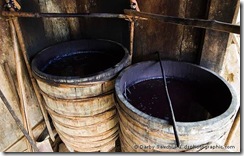Synthetic Indigo Dye Production Methods and Applications for Textile Industry
The Emergence of Synthetic Indigo Dye A Modern Marvel
Indigo dye has a rich history that dates back thousands of years, celebrated for its vibrant blue hue and its application in textiles. Traditionally sourced from natural plants, particularly the Indigofera genus, the production process was labor-intensive and time-consuming. However, with advancements in chemistry and technology, synthetic indigo dye has emerged as a significant player in the dyeing industry, offering numerous benefits and reshaping the textile landscape.
The Emergence of Synthetic Indigo Dye A Modern Marvel
One of the most notable advantages of synthetic indigo dye is its consistency. Natural indigo can vary in shade and quality due to factors such as soil conditions and plant variety, making it challenging for manufacturers to achieve uniform results. Synthetic indigo, on the other hand, allows for precise control over the dyeing process, producing consistent colors that meet the exacting standards of modern textile manufacturers.
synthetic indigo dye product

Furthermore, the environmental impact of synthetic indigo production has been a topic of debate. While the process involves petrochemical derivatives, advancements in green chemistry are leading to more sustainable production methods. For example, some companies are exploring bio-based alternatives and methods that minimize waste and reduce the carbon footprint associated with traditional synthetic dyeing processes. Innovations in wastewater treatment also enhance environmental compliance and reduce the detrimental effects of dyeing on local ecosystems.
In terms of applications, synthetic indigo dye dominates the denim industry, where it is predominantly used to color jeans. The iconic blue hue of denim has become a staple in fashion worldwide, symbolizing both durability and style. The ability to produce large quantities of indigo quickly has enabled brands to meet consumer demands while maintaining competitive pricing.
However, the rise of synthetic indigo dye has not been without criticism. Environmental activists have raised concerns regarding the reliance on synthetic derivatives, particularly in regions where health regulations may not be stringent. As a response, there is a growing trend among brands and consumers alike to seek out more eco-friendly alternatives, including natural dyes and recycled materials.
In conclusion, synthetic indigo dye has transformed the textile industry, marrying tradition with modernity. While it has successfully met the demands of contemporary fashion and manufacturing, the environmental implications of its production continue to call for awareness and action. As we move forward, the challenge will be to balance the benefits of synthetic indigo with sustainable practices that honor both the environment and the history of this remarkable dye. The future may very well hold exciting developments in eco-friendly dyeing techniques, engaging consumers in a conversation about sustainability while preserving the vibrant colors that indigo brings to our world.
-
The Timeless Art of Denim Indigo Dye
NewsJul.01,2025
-
The Rise of Sulfur Dyed Denim
NewsJul.01,2025
-
The Rich Revival of the Best Indigo Dye
NewsJul.01,2025
-
The Enduring Strength of Sulphur Black
NewsJul.01,2025
-
The Ancient Art of Chinese Indigo Dye
NewsJul.01,2025
-
Industry Power of Indigo
NewsJul.01,2025
-
Black Sulfur is Leading the Next Wave
NewsJul.01,2025

Sulphur Black
1.Name: sulphur black; Sulfur Black; Sulphur Black 1;
2.Structure formula:
3.Molecule formula: C6H4N2O5
4.CAS No.: 1326-82-5
5.HS code: 32041911
6.Product specification:Appearance:black phosphorus flakes; black liquid

Bromo Indigo; Vat Bromo-Indigo; C.I.Vat Blue 5
1.Name: Bromo indigo; Vat bromo-indigo; C.I.Vat blue 5;
2.Structure formula:
3.Molecule formula: C16H6Br4N2O2
4.CAS No.: 2475-31-2
5.HS code: 3204151000 6.Major usage and instruction: Be mainly used to dye cotton fabrics.

Indigo Blue Vat Blue
1.Name: indigo blue,vat blue 1,
2.Structure formula:
3.Molecule formula: C16H10N2O2
4.. CAS No.: 482-89-3
5.Molecule weight: 262.62
6.HS code: 3204151000
7.Major usage and instruction: Be mainly used to dye cotton fabrics.

